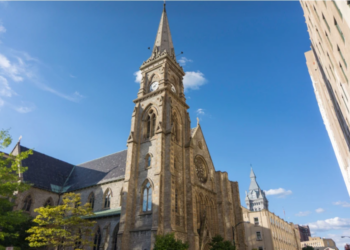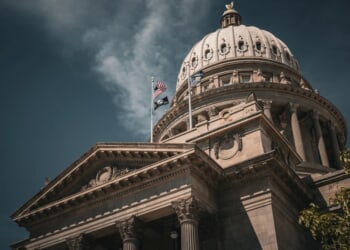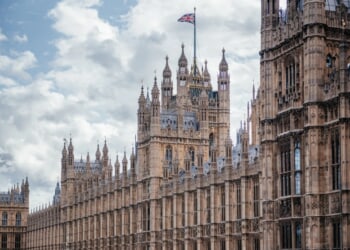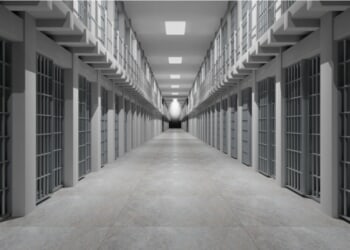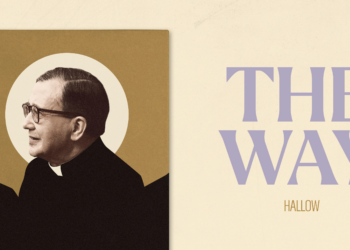Puebla, Mexico, Apr 9, 2025 /
06:00 am
At 103 years of age, Mexican Bishop José de Jesús Sahagún de la Parra is a living witness to the history of the Catholic Church. He is the world’s oldest bishop, still celebrates the Eucharist, and is one of only four surviving bishops who participated in the Second Vatican Council.
He was born in Cotija, a small and humble town in the state of Michoacán, in 1922 and ordained a priest on May 26, 1946. Fifteen years after his priestly ordination, Pope John XXIII appointed him the first bishop of the newly created Diocese of Tula in the state of Hidalgo.
For 24 years, he was a pillar of the diocese, until in 1985 when Pope John Paul II called him to a new challenge: to be the first bishop of the Diocese of Lázaro Cárdenas.
With the same dedication with which he had served in Hidalgo, he returned to his home state of Michoacán to shepherd a growing community, where he remained until 1993, the year he was allowed to retire.
Since then, his life has been lived in the tranquility of a home for nuns in Michoacán.
The ‘great builder’
For José Antonio Fernández Hurtado, current archbishop of Tlalnepantla, Sahagún de la Parra, who ordained him a priest in Tula, was a “great builder.”
Sahagún de la Parra arrived in Tula on Feb. 27, 1961. The newly established diocese was in its early stages, during which, according to Hurtado, “there was no evangelization and, therefore, no native vocations.”
However, his vision and efforts transformed the region, and he was responsible for the construction of “El Huerto” major seminary, which began holding classes in 1964. This center also welcomed students from the historic Montezuma Seminary in New Mexico when it closed its doors in 1972.
In addition to his educational work, Sahagún de la Parra dedicated himself to several social projects that he funded himself, demonstrating his deep commitment to social justice. Hurtado recalled that in the Mezquital Valley region, where people lived “precariously in jacales [humble huts],” he promoted the construction of small houses so they could have decent living conditions.
He also encouraged seminarians to get involved in these projects. “We would go help the bricklayers … and in the afternoon we would teach catechism,” he recalled.
On Oct. 11, 1985, St. John Paul II erected the Diocese of Lázaro Cárdenas and due to Sahagún de la Parra’s extensive experience in Hidalgo, he chose him as bishop for this new jurisdiction, which was formed from part of the Archdiocese of Morelia and the Diocese of Apatzingán.
His relationship with others
Hurtado recalled with admiration that, in addition to being a great builder of structures, Sahagún de la Parra was a builder of more humane communities with decent living conditions.
He recognized him as a “kind, generous, and very practical” person. A trait that stands out about the bishop is his “great respect for Indigenous people, that is, always thinking about human dignity,” he added.
As a pastoral leader, Sahagún de la Parra showed his priests “closeness and trust,” deeply caring about their personal formation. He also promoted good relations between priests and laypeople, actively involving the latter in the organizational life of the Church.
(Story continues below)
Subscribe to our daily newsletter
When Hurtado was appointed bishop of Tuxtepec, then archbishop of Durango, and later of Tlalnepantla, he always sought the advice of Sahagún de la Parra, who reiterated the same recommendation to remain “close to the priests, treat them with kindness, encourage them and, consequently, the laypeople as well.”
The Council period
In 1962, Pope John XXIII convened the Second Vatican Council. Despite having been a bishop for only one year, Sahagún de la Parra was called to participate in this epoch-shaping ecclesial event. He attended three of the four sessions of the council, which opened on Oct. 11, 1962, in St. Peter’s Basilica with more than 2,000 council fathers from around the world.
According to an article published by Mexican researcher and historian Father Juan Carlos Casas, some 40 Mexican bishops attended the council from 1962 to 1965.
At that time, Mexico had approximately 35 million inhabitants, 98% of whom declared themselves Catholic. The priority concerns of the Mexican bishops at the council included “the increase in vocations, the construction of churches and seminaries, the moralization of a permissive and secularized society, and the communist threat.”
Few records exist regarding Sahagún de la Parra’s participation. However, in his book ”Diocese of Tula: Notes on Its First 25 Years,” he mentions that he witnessed the collaborative work of the world’s bishops ”united by the same ideals: that the Church authentically fulfill the mission of making Christ present in this phase of humanity.”
Currently, only four council fathers are still alive; in addition to Sahagún de la Parra, they are Victorinus Youn Kong-hi, archbishop emeritus of Gwangju, South Korea; Daniel Verstraete, bishop emeritus of Klerksdorp, South Africa, both 100 years old; and Nigerian Cardinal Francis Arinze, prefect emeritus of the Congregation for Divine Worship and the Discipline of the Sacraments, who is 92.
The Eucharist, the center of his life
At 103 years of age, Sahagún de la Parra remains a living testimony of faith and dedication. For Hurtado, his longevity is no coincidence, but the fruit of two essential pillars in his life: the Eucharist and contact with the people.
When Hurtado had the opportunity to visit him to celebrate his 100th birthday, he was surprised to see that his ”great capacity for hospitality” remained intact and that despite the passage of time, ”he welcomed many people, and with everyone, because lay people came to visit him, and the doors were always open to all of them.”
Sahagún de la Parra’s daily life takes place in the serenity of his home, carefully cared for by the Diocesan Sisters of Our Lady of the Angels in Michoacán.
When contacted by ACI Prensa, CNA’s Spanish-language news partner — noting that for now the bishop does not grant interviews or receive visitors — the nuns shared that the prelate ”celebrates the Eucharist daily. It’s one of the reasons that has kept him strong and joyful.”
One of the things the sisters have learned from the bishop is that ”he has invited us to live joyfully, to be generous with our lives, to live in peace, and to always ask God for his strength.”
”He has been a very generous person, who easily gives away material goods to help others,” the sisters emphasized.
This story was first published by ACI Prensa, CNA’s Spanish-language news partner. It has been translated and adapted by CNA.




